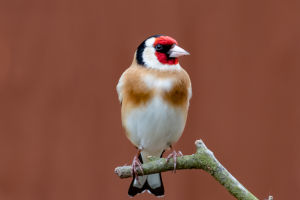When a scarlet macaw takes flight, it’s like a piece of the rainbow has broken free, streaking across the sky.
With their bold red bodies, flashes of blue and yellow on their wings, and a tail that seems to stretch endlessly, these vibrant parrots turn heads wherever they go.
But beyond their breathtaking colors lies a fascinating world of biology and behavior that makes scarlet macaws more than just a pretty sight.
A Symphony of Feathers
The scarlet macaw's feathers are its most striking feature. The rich crimson covers most of their body, while bright yellow feathers spread across their wings like sunshine. As they soar, patches of electric blue create a dazzling contrast, making their flight an unforgettable visual experience. These color patterns aren’t just for show—they play a crucial role in communication. When scarlet macaws spread their wings, they can signal to other birds, attracting mates or warning rivals to keep their distance.
Interestingly, their colorful appearance also acts as camouflage in the dense rainforests of Central and South America. High in the canopy, the bright hues blend with the foliage, flowers, and fruits, helping the birds remain hidden from predators.
Brainy Birds
Scarlet macaws are not just beautiful—they are incredibly smart. Like many parrots, they have advanced cognitive abilities and can solve problems, use tools, and mimic human speech. In the wild, they rely on their intelligence to find food, crack open tough nuts, and even outwit potential predators. Their ability to form strong bonds with their flock members is another testament to their brainpower. Macaws are known to mate for life, and their partnerships are built on trust, companionship, and shared responsibilities, including raising young ones.
These birds are also incredibly social, living in groups that allow them to learn from one another and protect against threats. In the early morning, you might hear them squawking loudly, calling out to each other as they prepare to forage. Their loud, piercing calls are an essential part of their communication, cutting through the dense rainforest sounds.
11 (New) Scarlet Macaw Facts You Didn't Know [Must Check #3]
Video by Grow Kido
The Biology of Beauty
The scarlet macaw’s beauty goes beyond feathers. With powerful beaks designed to crush nuts and seeds, and sharp claws perfect for gripping tree branches, these birds are perfectly adapted for life in the forest. Their tongues are uniquely textured, helping them manipulate food with ease, while their zygodactyl feet—two toes forward and two toes back—allow them to climb skillfully through treetops.
Scarlet macaws can live up to 50 years in the wild, and some have been known to reach even older ages in captivity. However, their long lifespan also makes them vulnerable in the pet trade. Sadly, illegal capture for the exotic pet market and deforestation threaten their populations. Conservation efforts are now underway to protect these majestic creatures and their rainforest homes.
The Art of Parenting
Macaw couples make devoted parents. They nest in hollowed-out tree trunks, where the female lays 1-4 eggs. Both parents take turns guarding the nest and feeding the chicks once they hatch. The young macaws stay with their parents for up to a year, learning essential survival skills before venturing off on their own. This family-oriented behavior reflects the depth of their social structure and emotional intelligence, qualities that endear them to bird lovers worldwide.
A Call to Protect Nature’s Rainbows
While scarlet macaws continue to awe and inspire, their future is tied to the health of their rainforest habitat. Protecting these birds means preserving the forests they call home, ensuring that future generations can witness these flying rainbows in the wild. Through eco-tourism and education, people are beginning to understand the importance of conservation efforts.
So, next time you see a scarlet macaw, remember you’re witnessing more than just a bird—you're seeing a symbol of beauty, intelligence, and the delicate balance of nature.


